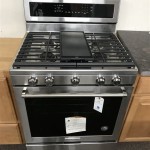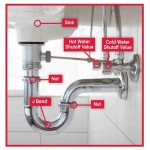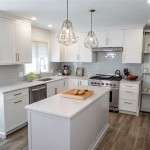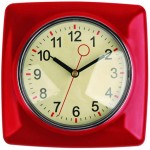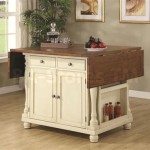How to Install a Fluorescent Light Fixture in a Kitchen
Installing a fluorescent light fixture in a kitchen can significantly improve the lighting quality, providing bright and even illumination for food preparation, cooking, and cleaning tasks. Fluorescent fixtures are generally more energy-efficient than incandescent bulbs, leading to lower electricity bills over time. While it's advisable to consult a qualified electrician for any electrical work, this article provides a comprehensive guide to installing a fluorescent light fixture for individuals with a basic understanding of electrical wiring and safety practices. Following these instructions carefully will help ensure a safe and successful installation.
Before starting any electrical project, it is paramount to prioritize safety. Always disconnect the power to the circuit at the breaker box or fuse box before commencing any work on the electrical wiring. This prevents the risk of electric shock. Double-check that the power is off by using a non-contact voltage tester on the wires you will be working with. Confirming the absence of voltage is a critical step.
Gather all necessary tools and materials before beginning the installation process. Having everything readily available will streamline the project and minimize potential delays. Essential tools include a non-contact voltage tester, wire strippers, wire connectors (wire nuts), a screwdriver (both Phillips head and flathead), pliers, electrical tape, safety glasses, a ladder or step stool, and the new fluorescent light fixture itself. Check the package to verify it contains all the necessary hardware, such as mounting screws, brackets, and bulbs.
Key Point 1: Preparing the Electrical Wiring
The first crucial step involves preparing the existing electrical wiring. Begin by carefully removing the old light fixture, if one is present. After confirming the power is off, detach the fixture from the ceiling or wall. This usually involves unscrewing mounting screws or loosening retaining clips. Once the fixture is detached, carefully disconnect the wires. Common wire colors include black (hot), white (neutral), and green or bare copper (ground). Use the wire strippers to expose about ½ inch of bare wire on the ends of each wire, taking care not to nick or damage the wire strands. This bare wire will be used to make secure connections to the new fixture's wiring.
Identify the electrical box in the ceiling or wall. This box houses the wiring connections and provides a secure mounting point for the new fixture. Inspect the box for any damage or corrosion. If the box is damaged, it should be replaced by a qualified electrician. Ensure the box is properly secured to the ceiling or wall structure. A loose or unstable electrical box can create a safety hazard. Verify that the box is rated for the weight of the new fluorescent light fixture. Overloading the box can cause it to detach, potentially damaging the fixture or causing injury.
Once the electrical box is inspected and prepared, carefully identify the incoming wires. The black wire is the hot wire, which carries the electrical current. The white wire is the neutral wire, which returns the current to the power source. The green or bare copper wire is the ground wire, which provides a path for fault current to safely return to the ground, preventing electrical shock. If the wiring is old, the wire colors may be faded or unclear. In this case, a voltage tester can be used to identify the hot wire.
Properly preparing the electrical wiring is critical for a safe and reliable installation. Take the time to carefully inspect the wires and the electrical box, ensuring they are in good condition and properly connected. If you are unsure about any aspect of the wiring, consult with a qualified electrician.
Key Point 2: Installing the Mounting Hardware
The next step involves installing the mounting hardware for the new fluorescent light fixture. The hardware typically consists of a mounting bracket or plate that attaches to the electrical box and supports the weight of the fixture. The specific mounting hardware will vary depending on the design of the fixture.
Refer to the manufacturer's instructions that came with the fixture for specific details on installing the mounting hardware. Generally, the mounting bracket is attached to the electrical box using screws. Ensure the screws are securely tightened to prevent the bracket from loosening over time. The mounting bracket should be aligned properly to ensure the fixture hangs straight and level.
For some fluorescent fixtures, the mounting hardware may include adjustable straps or supports. These can be used to fine-tune the position of the fixture and ensure it is properly aligned. Follow the manufacturer's instructions carefully when adjusting these straps or supports. The mounting hardware must be strong enough to support the weight of the fixture. If the existing mounting hardware is not adequate, it may need to be replaced with a sturdier option.
Carefully consider the placement of the fixture in relation to the electrical box. Some fixtures may have specific requirements for mounting distance or orientation. Ensure the fixture is positioned correctly to maximize the lighting performance and aesthetics. If the fixture is too close to the edge of the ceiling or wall, it may create unwanted shadows or glare.
Before proceeding, double-check that the mounting hardware is securely attached to the electrical box and that it is properly aligned. This will ensure the fixture is stable and safe to operate. Using a level can help ensure the fixture is installed straight and level.
Key Point 3: Connecting the Wiring and Mounting the Fixture
Once the mounting hardware is securely in place, the next step is to connect the wiring. This involves connecting the black wire from the electrical box to the black wire on the fixture, the white wire from the electrical box to the white wire on the fixture, and the green or bare copper wire from the electrical box to the green or bare copper wire (or the grounding screw) on the fixture. Use wire connectors (wire nuts) to make these connections.
To use a wire connector, hold the bare ends of the two wires together and twist the wire connector onto the wires in a clockwise direction. Make sure the connection is tight and secure. Tug on the wires gently to verify they are firmly connected. Wrap electrical tape around the wire connector to further insulate the connection and prevent it from coming loose. The wire tape should cover the entire wire nut and extend slightly onto the wire insulation.
Ensure that no bare wire is exposed outside of the wire connector. Exposed bare wire can create a short circuit or an electrical hazard. If the wires are too short to make a secure connection, use wire extensions to lengthen them. Wire extensions are short pieces of wire that are connected to the existing wires using wire connectors.
After the wiring is connected, carefully tuck the wires into the electrical box. Be careful not to pinch or damage the wires. The wires should be neatly organized within the box to allow the fixture to sit flush against the ceiling or wall. Some fixtures have a designated space for storing the wiring, which can help keep the wires organized.
Finally, mount the fluorescent light fixture to the mounting hardware. This usually involves aligning the fixture with the mounting bracket and securing it with screws or clips. Follow the manufacturer's instructions for specific details on mounting the fixture. Make sure the fixture is securely attached and that it is properly aligned. Once the fixture is mounted, install the fluorescent bulbs. Again, ensure to review the manufacturer’s guidelines for proper bulb installation.
After the installation is complete, turn the power back on at the breaker box or fuse box. Test the fixture to ensure it is working properly. If the fixture does not turn on, double-check the wiring connections and the bulb installation. If the problem persists, consult with a qualified electrician.
Installing a fluorescent light fixture can be a rewarding project that improves the lighting in your kitchen. By following these instructions carefully and taking the necessary safety precautions, you can successfully install the fixture and enjoy the benefits of bright, energy-efficient lighting.
Proper disposal of the old fixture and bulbs is also important. Fluorescent bulbs contain mercury, a hazardous material. Dispose of them at a designated recycling center or hazardous waste collection site. Contact your local waste management agency for information on proper disposal methods.

How To Replace An Old Fluorescent Light Fixture Young House Love

How To Replace An Old Fluorescent Light Fixture Young House Love

How To Replace An Old Fluorescent Light Fixture Young House Love

Replacing Fluorescent Light Boxes In Your Kitchen My Design Rules

How To Replace An Old Fluorescent Light Fixture Young House Love

Removing A Fluorescent Kitchen Light Box The Kim Six Fix

Upgrade Your Kitchen Lighting Step By Guide

How To Change Long Light Bulbs T12 Fluorescent

Kitchen Florescent Light Box Makeover With Track Lighting On A Budget

Removing A Fluorescent Kitchen Light Box The Kim Six Fix
Related Posts



